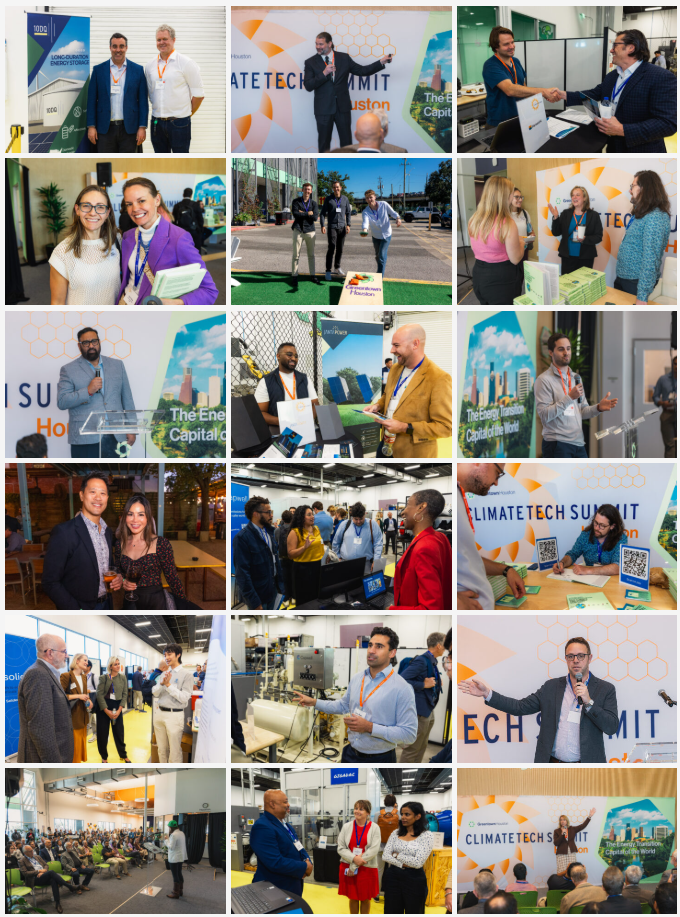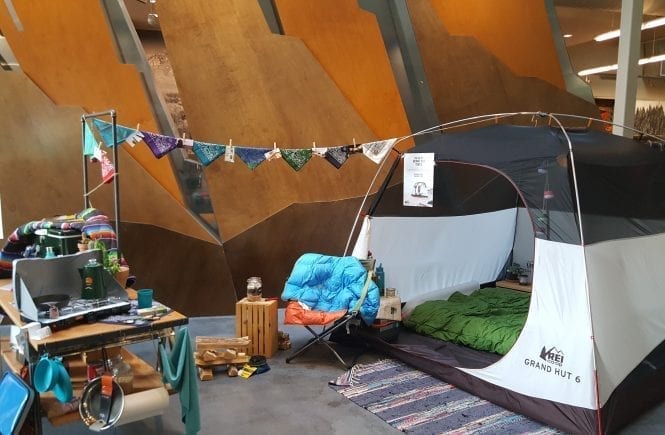The 2025 Greentown Labs Climatetech Summit brought together hundreds of climate and energy entrepreneurs, corporate leaders, investors, and policymakers to explore the state of innovation at one of the most dynamic moments in climatetech’s evolution.
This year’s theme centered around what speakers described as “Climatetech 3.0”—an era defined by economic feasibility, scalability, and innovation without dependence on green premiums or policy incentives. In other words, the next chapter of climate technology must compete and succeed on the open market; not just as an ethical imperative, but as a smart economic strategy.
As someone who attended the virtual panels in the morning and then joined the startup showcase and networking events in person at Greentown Houston, the day offered an inspiring cross-section of ideas, technologies, and people building a cleaner, more resilient energy future.

Kicking Off: Collaboration and Climate Leadership
The summit opened with remarks from Chris Buckner (CRO of Shoreless.ai and event emcee), Houston Mayor John Whitmire, and Greentown Labs CEO Georgina Campbell Flatter.
Mayor Whitmire encouraged the audience to double down on climate innovation and to embrace Houston’s growing role as a hub for clean energy leadership. Flatter echoed that sentiment, celebrating the power of collaboration—“Houston and Boston, energy and climate, innovation and scale.”
She posed a critical question that framed the rest of the day:
“How do we deliver more energy with fewer emissions—faster than ever before? How do we ensure prosperity reaches everyone—and build the good jobs of the future right here at home?”
Her answer: innovation clusters that serve as launchpads for climatetech entrepreneurs and help propel their solutions from prototype to commercialization.

Keynote: Energy Innovation as American Leadership
Philanthropist John Arnold, Co-Founder and Co-Chair of Arnold Ventures, joined Flatter for the keynote fireside chat on Energy Innovation as American Leadership.
Their conversation explored how innovation can drive affordability, reliability, and competitiveness in the U.S. energy landscape—particularly in Houston, long known as an energy capital now transforming into an energy-transition capital.
Arnold’s most striking point reflected the day’s theme of pragmatic climate action:
“Energy equals prosperity, you cannot have prosperity without energy abundance. Any solution that has an affordability tradeoff is inherently unstable. Scale requires something to be cost-competitive.”
It was a powerful reminder that the future of climatetech depends on solutions that are financially viable as well as environmentally sound.
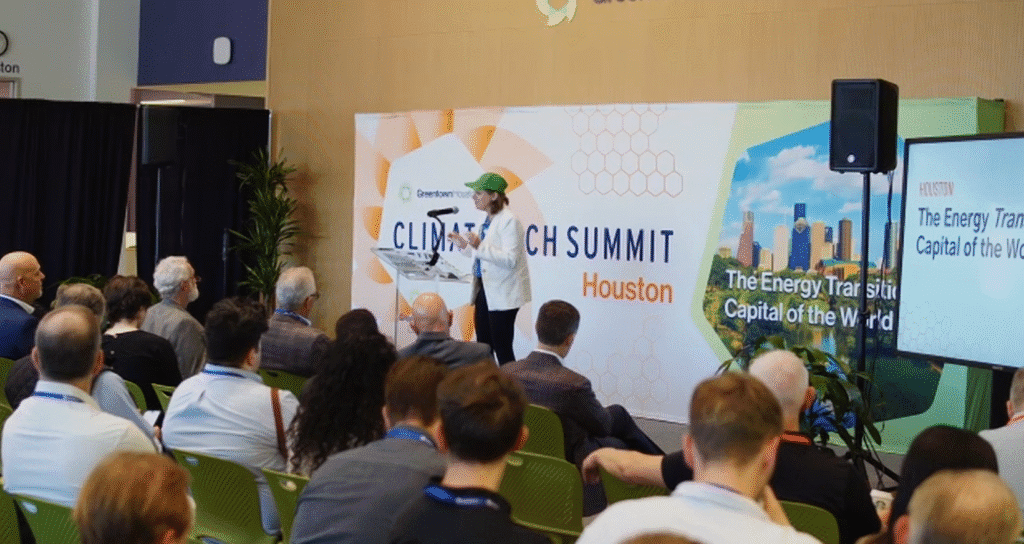

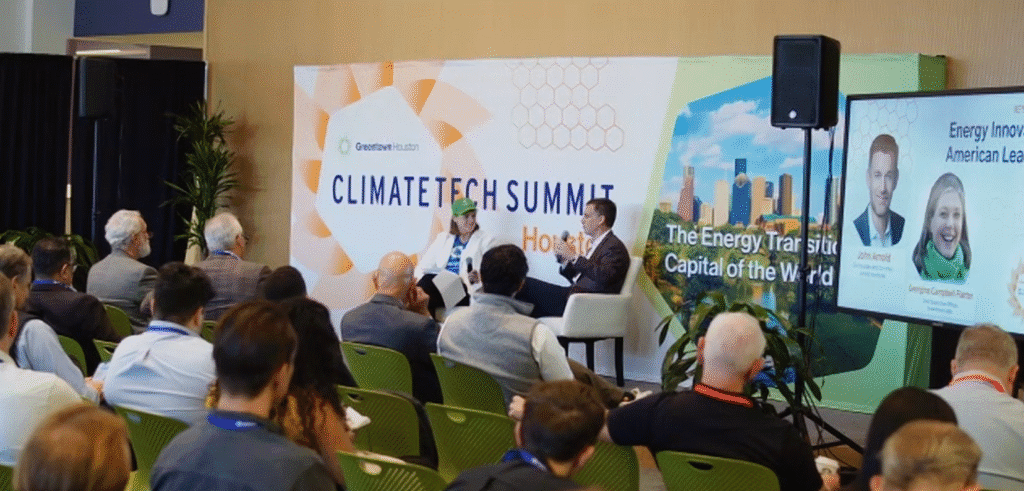
Education, Entrepreneurship, and Emerging Ideas
The morning continued with a book launch for Disciplined Entrepreneurship for Climate and Energy Ventures, led by co-author Ben Soltoff of MIT’s Climate & Energy Ventures program. He discussed how structured entrepreneurial frameworks can accelerate climate innovation, and interviewed Helix Earth CEO Rawand Rasheed, a Greentown member applying those methods to advance carbon capture and clean cooling systems.
Following that, Sandy Guitar, Executive Director of TEX-E (Texas Exchange for Energy & Climate Entrepreneurship), shared how the organization has localized MIT’s curriculum to build a stronger climate entrepreneurship pipeline across Texas universities, bridging academic research with real-world startup development.
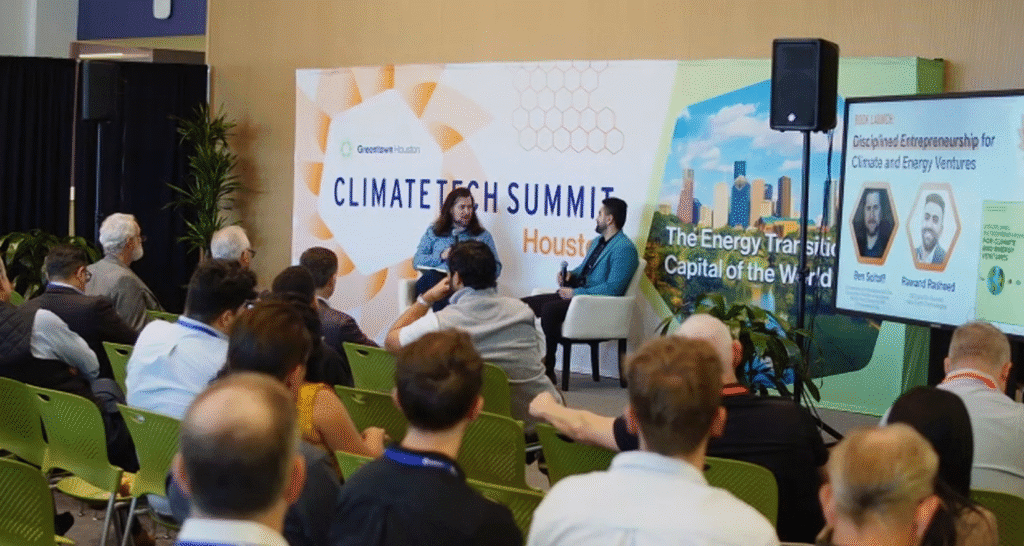
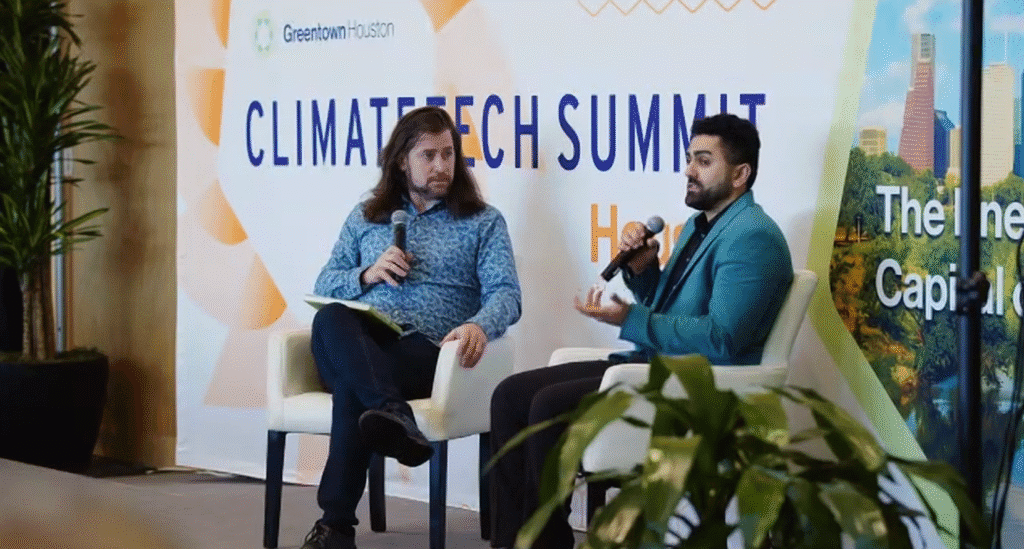
Startup Pitches: Innovation in Action
Two sets of lightning startup pitches showcased some of the most exciting technologies coming out of the Greentown ecosystem:
Session One:
- MCatalysis – Upcycling waste carbon into low-cost synthetic fuels and chemicals.
- Teknobuilt – AI-powered workflow automation for the construction industry.
- Helix Earth – NASA-derived carbon capture and clean cooling systems.
- 10DQ – Redox loop batteries using low-cost, water-based electrolytes.
- Janta Power – Pioneering 3D solar tower technology.
- CLS Wind – Self-erecting wind turbine systems for faster, safer deployment.
Session Two:
- Neuralix – AI-driven data lifecycle templates for energy and manufacturing.
- Ententia – Generative AI for industry, delivering operational precision.
- LOCOAL – Converting waste materials into clean energy and carbon credits.
- SpiralWave – Compact carbon capture using capillary electrolysis.
- BiaTech – Multisensory AI for energy and resource infrastructure.
- Solidec + Lynas Rare Earths – A newly announced partnership advancing rare-earth oxide recovery and sustainability.
Each company represented a different corner of the climate ecosystem—from circular economy and decarbonization to digital transformation—showing how diverse and interdisciplinary climatetech has become.

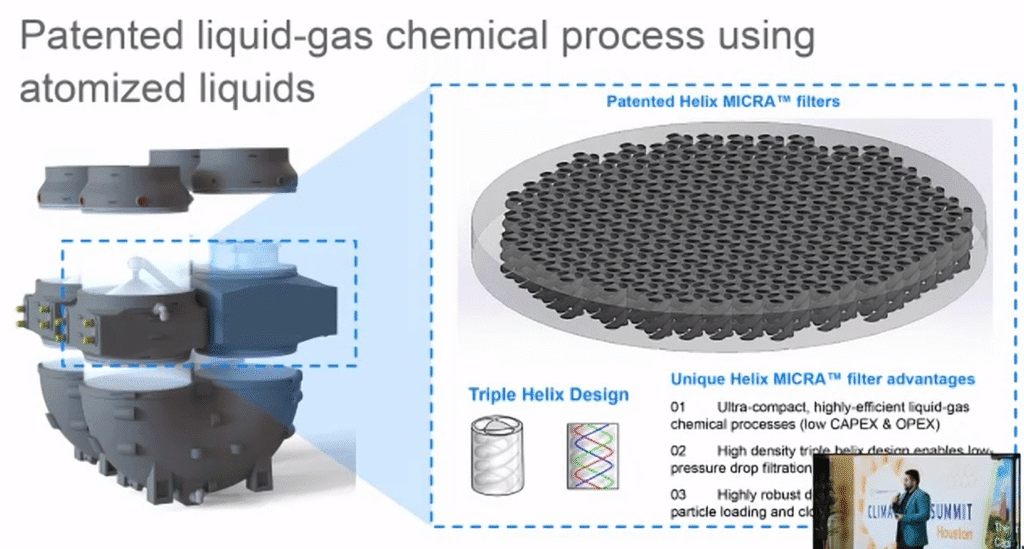

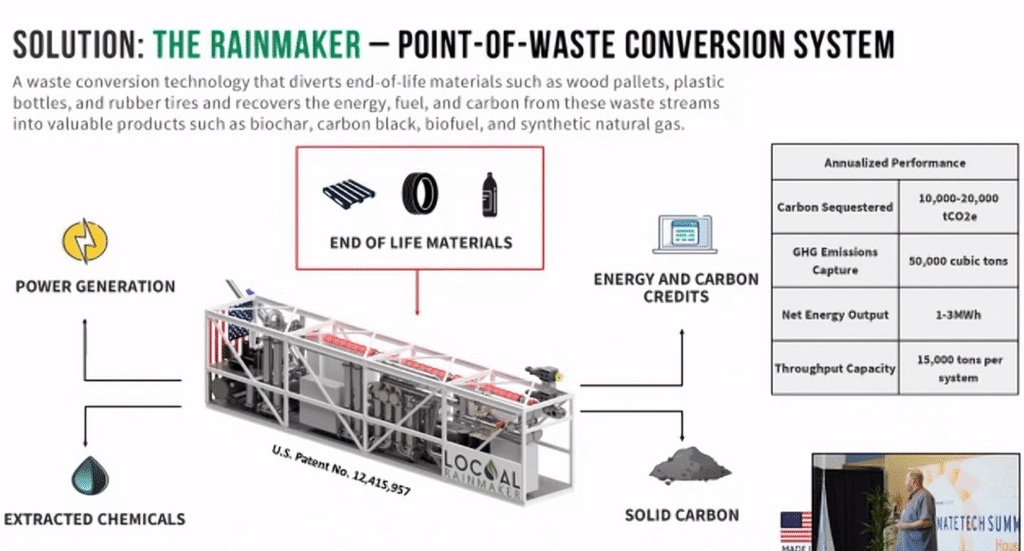

Defining Climatetech 3.0
The mid-morning panel, “What Is Climatetech?”, took a deeper dive into what defines this evolving industry. Moderated by Lawson Gow (Head of Greentown Houston), the discussion featured Laureen Meroueh (Hertha Metals), Kyle Judah (Rice University), and Denka Wangdi (Emerson).
Meroueh coined the phrase “Climatetech 3.0”, describing it as the moment when climate startups must stand on their own, independent of subsidies or policy buffers.
“It’s no longer about subverting profit for sustainability—it’s the marriage of the two,” added Judah.
This era, the panel agreed, is marked by pragmatic optimism: a focus on financially sustainable solutions that can scale globally without sacrificing environmental impact.



Learning from the Past: The Shale Revolution as a Roadmap
The session “Lessons from the Shale Revolution: An Energy-Transition Roadmap?” drew on Houston’s legacy to look forward. Featuring Bobby Tudor (Artemis Energy Partners), Monica Krishnan (Breakthrough Energy), Hermann Lebit (Alma Energy), and Varun Rai (UT Austin), the panel examined how partnerships, policy, and investment once aligned to make the U.S. a global energy leader—and how those lessons can guide today’s transition.
The takeaway: to make the clean energy future a reality, we’ll need the same level of courage, coordination, and capital that drove past revolutions in energy technology—this time with sustainability and equity at the center.


From Panels to Prototypes: My Time at Greentown Houston
After the virtual sessions wrapped, I joined the Greentown Houston startup showcase in person. The atmosphere inside the incubator was invigorating with rows of prototypes, posters, and passionate founders demonstrating everything from advanced materials to robotics for energy applications.
It’s one thing to hear about innovation on a panel, it’s another to see it in action. Talking with founders, scientists, and engineers gave me a new appreciation for how quickly these technologies are moving from concept to deployment. Many are already piloting with major industry partners, proving that Houston isn’t just participating in the energy transition, it’s leading it.
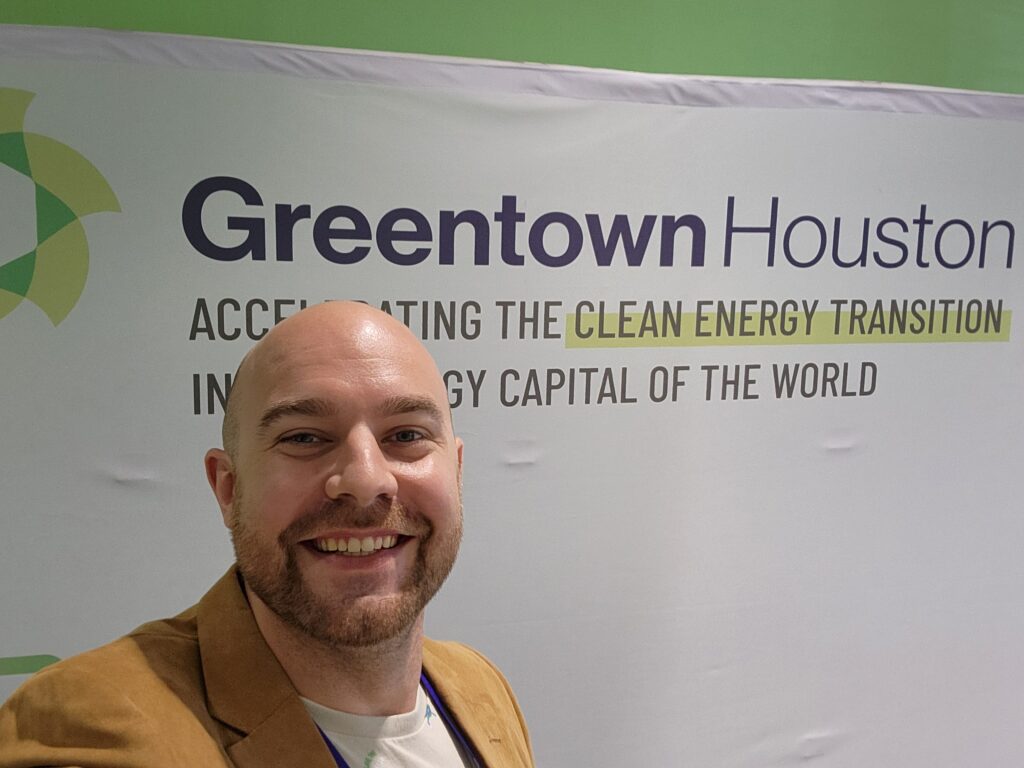
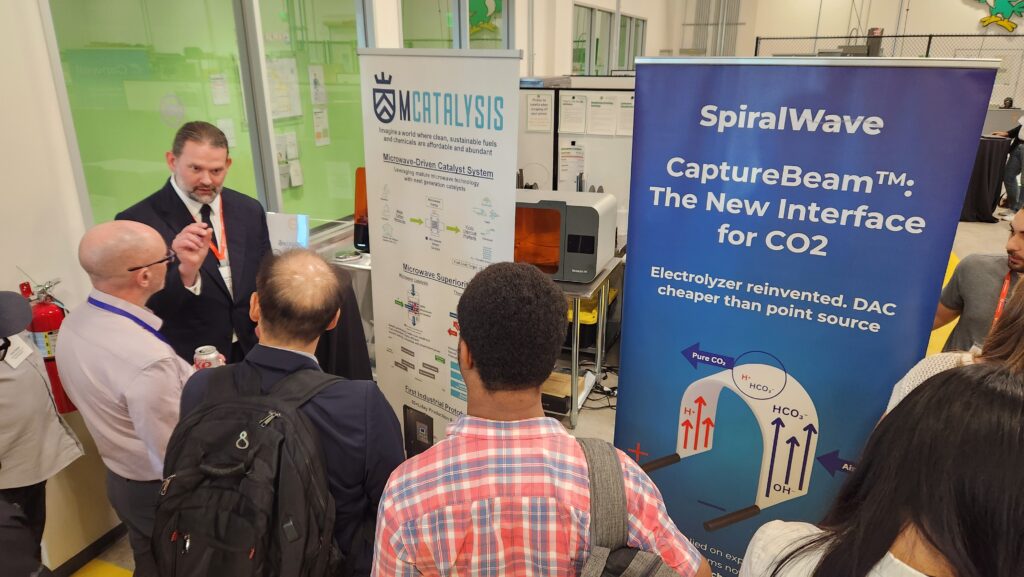
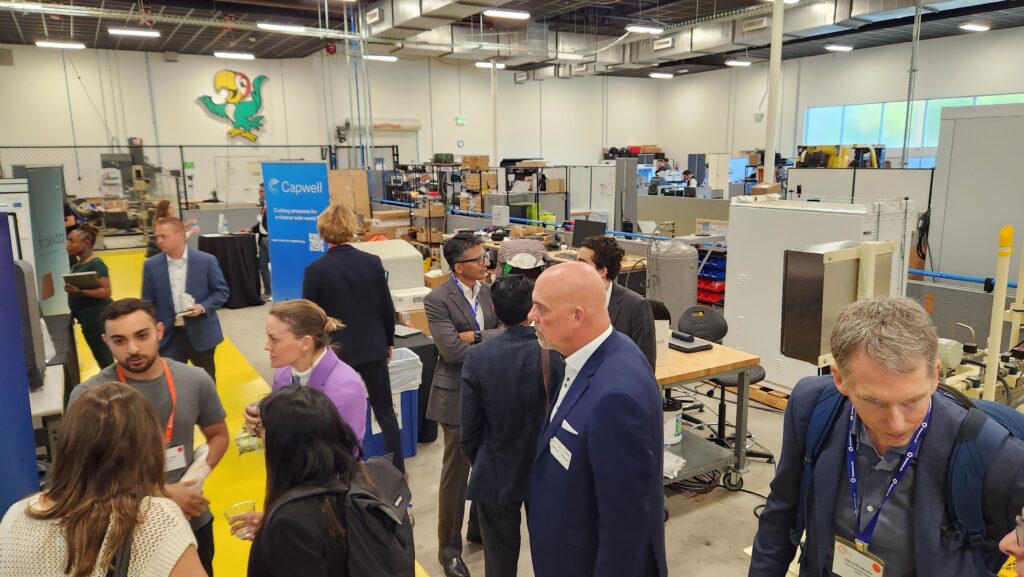
Closing the Day: Connection and Community
The summit wrapped up with a networking happy hour at Axelrad Houston, where conversations were had between climatetech founders, investors, students, and sustainability professionals. This portion of the event felt less like a formal conference and more like a community celebration—a reminder that collaboration is as important as invention in tackling climate challenges.
Across both the panels and the networking, one message resonated clearly: climate innovation thrives where people connect across disciplines—engineers with communicators, entrepreneurs with policymakers, and scientists with investors.
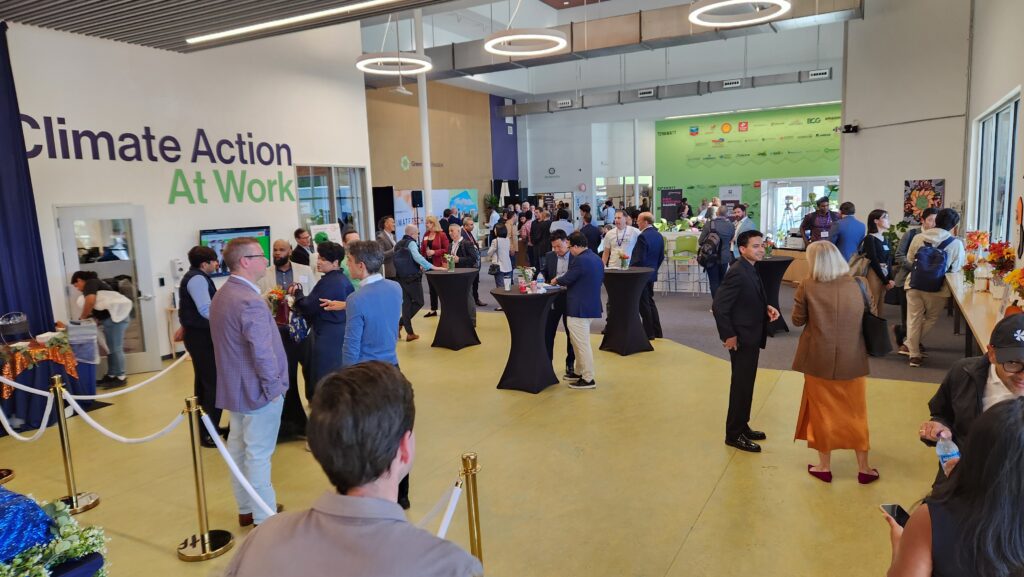
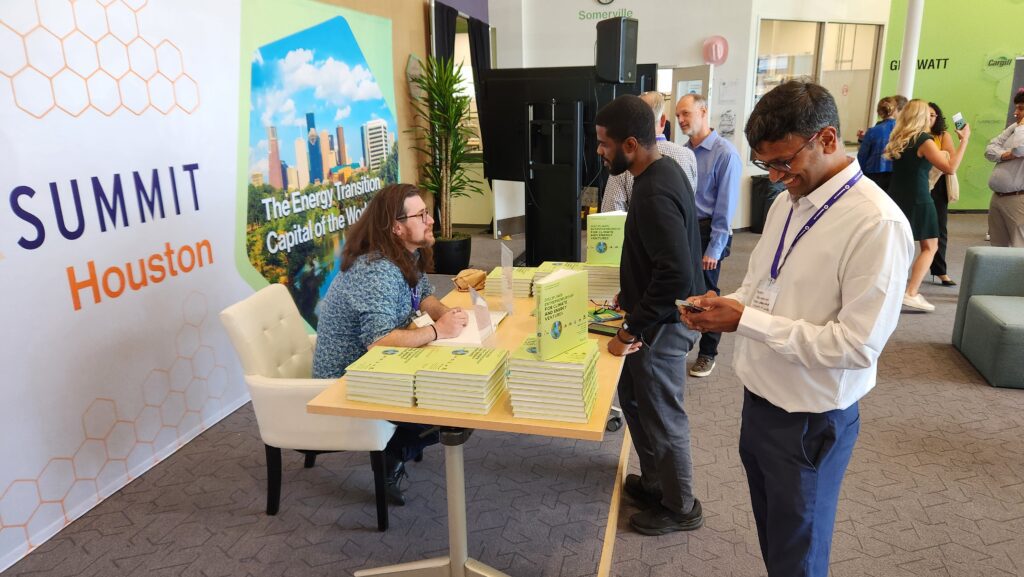
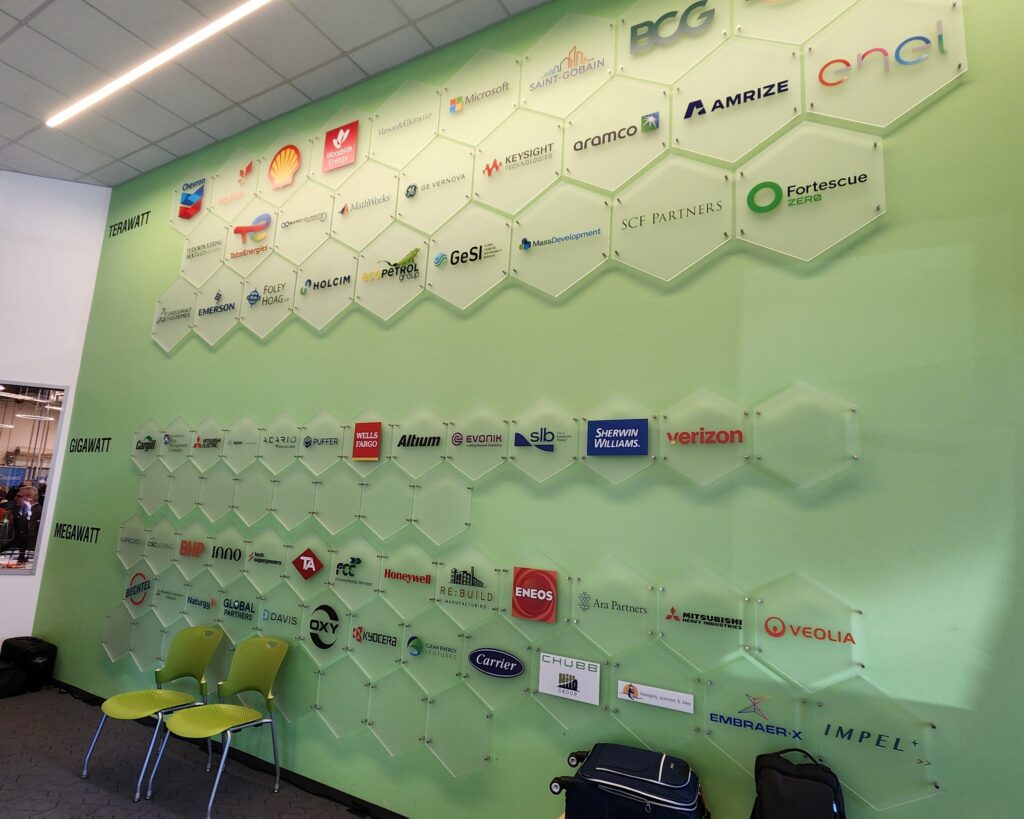


Reflections: Houston’s Climate Moment
Leaving the event, I was reminded why gatherings like this matter. They turn big ideas into shared understanding, and shared understanding into tangible collaboration.
Greentown Labs has created a model for how cities can lead the next wave of sustainable innovation—not by abandoning their energy legacy, but by reinventing it.
If Climatetech 1.0 was about awareness, and 2.0 about early adoption, then 3.0 is about scaling solutions that make economic and environmental sense. The excitement in Houston this week proved that the city’s next energy chapter is already being written and it’s one powered by collaboration, creativity, and climate action.
